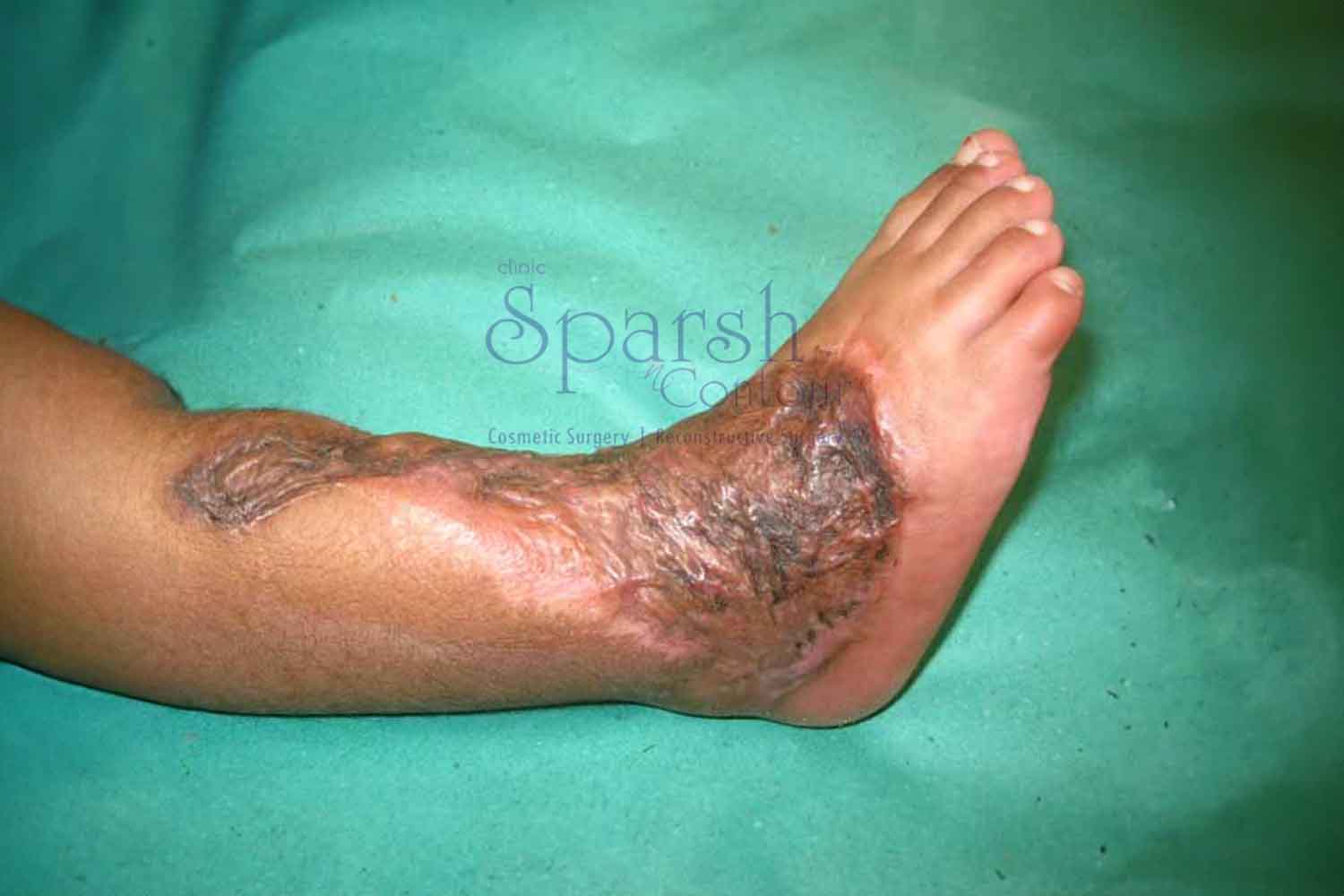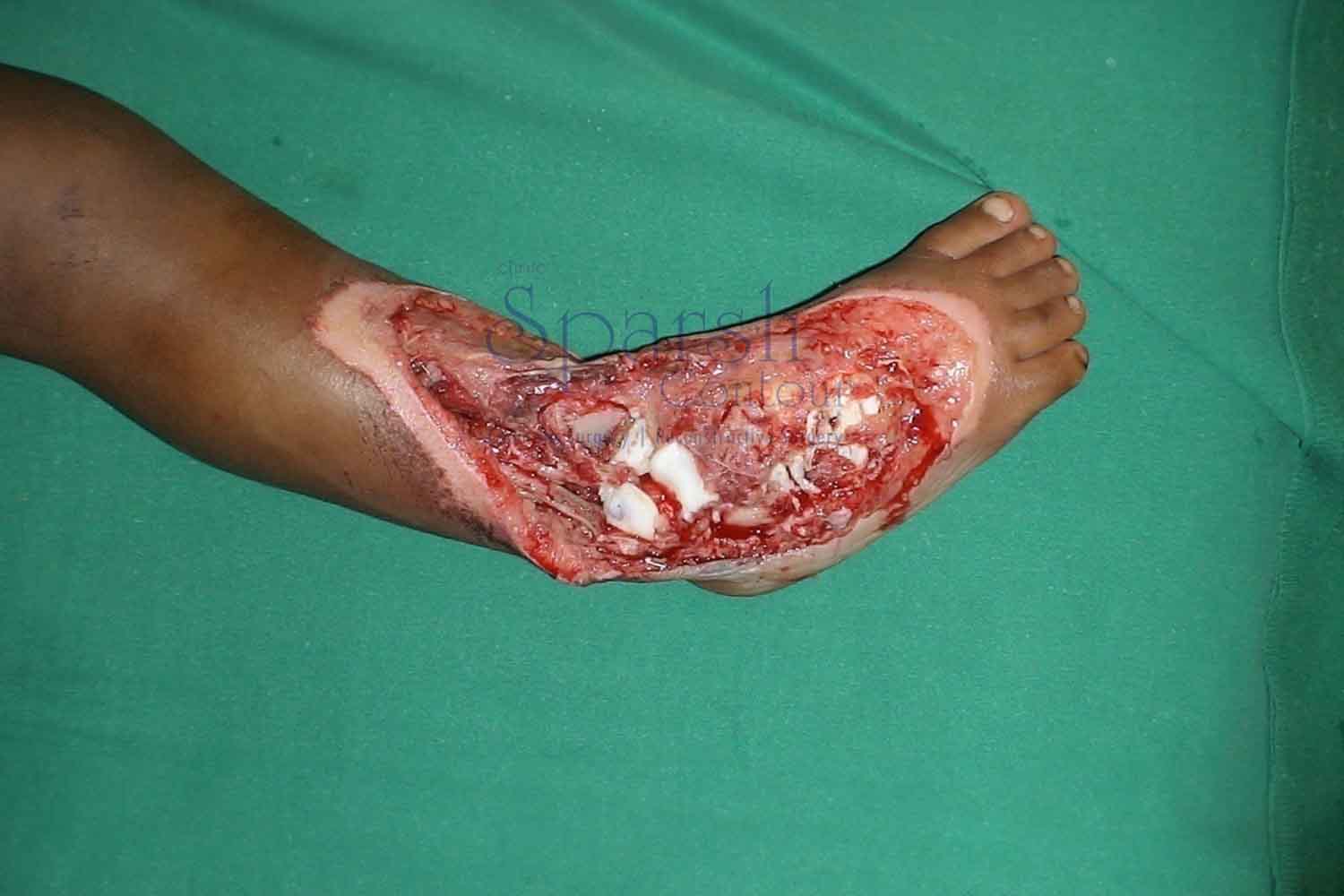Reconstruction Surgeries
Trauma Reconstruction
Trauma reconstruction is a specialized area of plastic surgery aimed at restoring the function, structure, and appearance of tissues and organs affected by severe injuries. Whether caused by accidents, burns, or other traumatic events, this surgical intervention helps patients recover physically and emotionally from life-altering damage. Dr. Sushil Nahar, an esteemed plastic surgeon, offers advanced trauma reconstruction solutions tailored to the unique needs of niche patients, ensuring both functional recovery and aesthetic restoration.
Traumatic injuries can result in complex challenges, such as damaged skin, muscles, bones, or nerves. For injuries involving the face, hands, or other critical structures, his expertise ensures precision and attention to detail, restoring both functionality and natural appearance.
The emotional impact of trauma is profound, and Dr. Sushil Nahar understands the importance of compassionate care. His focus extends beyond physical repair, addressing the psychological effects of trauma by helping patients regain confidence and a sense of normalcy.
Recovery from trauma reconstruction surgery varies depending on the severity of the injury and the complexity of the procedure. Dr. Sushil Nahar guides patients through each step of the healing process, offering detailed aftercare instructions and regular follow-ups to monitor progress. For patients with unique challenges, his expertise ensures that even the most complex cases receive optimal care.
Traumatic injuries can result in complex challenges, such as damaged skin, muscles, bones, or nerves. For injuries involving the face, hands, or other critical structures, his expertise ensures precision and attention to detail, restoring both functionality and natural appearance.
The emotional impact of trauma is profound, and Dr. Sushil Nahar understands the importance of compassionate care. His focus extends beyond physical repair, addressing the psychological effects of trauma by helping patients regain confidence and a sense of normalcy.
Recovery from trauma reconstruction surgery varies depending on the severity of the injury and the complexity of the procedure. Dr. Sushil Nahar guides patients through each step of the healing process, offering detailed aftercare instructions and regular follow-ups to monitor progress. For patients with unique challenges, his expertise ensures that even the most complex cases receive optimal care.
 After
After  Before
Before Drag
Reconstruction Surgeries
Why Trauma Reconstruction Surgery is needed ?
- Addresses deformities caused by traumatic injuries, burns, or accidents, improving appearance and symmetry.
- Promotes Physical Recovery: Aids in healing and recovery by reconstructing injured tissues and restoring their structural integrity.
- Minimizes Long-Term Disability: Prevents permanent loss of function or deformity by intervening early and effectively.
- Repairs Critical Structures: Focuses on delicate areas like the face, hands, or scalp, where functionality and aesthetics are equally important.
our expert answers
frequently asked questions
Who is a candidate for trauma reconstruction surgery?
Anyone with physical disfigurement, functional impairments, or tissue damage caused by trauma, burns, or complex injuries may benefit from this surgery.
How long does trauma reconstruction surgery take?
The duration varies depending on the severity and complexity of the injury, typically ranging from a few hours to multiple sessions for staged procedures.
Can trauma reconstruction restore full functionality?
While it aims to restore as much function as possible, outcomes depend on the severity of the injury and the patient’s overall health.
Will there be visible scars after the surgery?
Scarring is inevitable but can be minimized with advanced surgical techniques and proper postoperative care.
Can multiple areas be treated simultaneously?
Depending on the injury’s complexity, multiple areas may be addressed in a single procedure or through staged surgeries
Does trauma reconstruction address emotional trauma?
While primarily a physical procedure, restoring appearance and functionality often helps alleviate emotional distress caused by visible injuries.
APPOINTMENT
